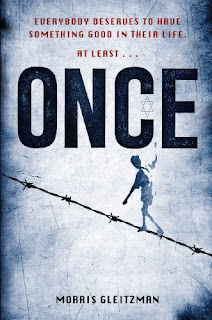 It's been a while since I posted (thanks to new semester starting and other job duties that keep me from reading YA lit, boo hiss), but on this 5th anniversary of Katrina I thought it appropriate to FINALLY read Josh Neufeld's A.D. New Orleans: After the Deluge. It's been reviewed here, and it's available in its original SMITH Magazine format here. I love the graphics, from the first pages of slanted rain and the before/after bird's-eye views of the city, to the use of muted greys to denote flashbacks.
It's been a while since I posted (thanks to new semester starting and other job duties that keep me from reading YA lit, boo hiss), but on this 5th anniversary of Katrina I thought it appropriate to FINALLY read Josh Neufeld's A.D. New Orleans: After the Deluge. It's been reviewed here, and it's available in its original SMITH Magazine format here. I love the graphics, from the first pages of slanted rain and the before/after bird's-eye views of the city, to the use of muted greys to denote flashbacks.The story follows 7 very different New Orleanians in the days leading up to the flood, and then a year later. There's Leo and Michelle, young hipsters who decide to leave town at the last minute. Leo frets about leaving his beloved comic books behind. Abbas owns a convenience store, and although his family leaves town for Houston, he decides to stay to protect the store against looters. Darnell is Abbas' friend, who decides to wait out the storm with him. Kwame is a high school senior, son of a pastor, who flees with his family to his older brother's college dorm in Tallahassee, FL. Brobson is a rich doctor who doesn't believe a storm's really coming. In fact, he throws a "hurricane party" the night before the storm hits. Denise is living with her mother, a surgical tech at a hospital. They plan to wait out the storm and take shelter at the hospital. Only, when they get to the hospital, it's overcrowded and Denise decides to head back home.
Then the storm hits, and the levees hold at first...
...but then they breach, and the flooding starts.
Denise and her family end up at the Superdome, and when no one arrives with water or medical attention, or help of any kind, all she can think is, "They are trying to kill us all." Abbas decides to leave his store behind when Darnell, who has asthma, has an attack. They are able to hop on a boat that happens by the store's rooftop and both men are eventually reunited with family. Nothing happens to the rich white doctor--he's safe in the French Quarter, and bemoans the loss of his favorite snazzy lunch spot, Galatoire's. Kwame and his brother are sent to live with relatives in California, while his mother and father struggle to rebuild their church in New Orleans. Leo loses all his beloved comic books, and he and Michelle spend time with various family members until deciding to return to New Orleands to re-build.
This is a touching, poignant read, especially as you watch Denise, Leo/Michelle, and Abbas agonize over what they lose in the flood--material items, their homes, their sense of place/identity, and time. Denise struggles further in her decision to return to New Orleans, and Abbas struggles with the decision he made to leave his store during the flooding. To stay, or flee, or return home? Agonizing questions, made all the more tragic against the backdrop of larger unanswered questions about humanity and our responsibilities to each other.






